Author: Tian Hui
Huawei HI version car with LiDAR is finally listed in the “Notice of Production Enterprises and Products of Road Motor Vehicles”.
On May 13th, the Ministry of Industry and Information Technology announced the vehicle models reported in the 344th batch of the “Notice of Production Enterprises and Products of Road Motor Vehicles”. A total of 276 new energy vehicles were reported, an increase from the previous batch. Among them, there are a total of 41 new energy passenger cars, a decrease from the previous batch.
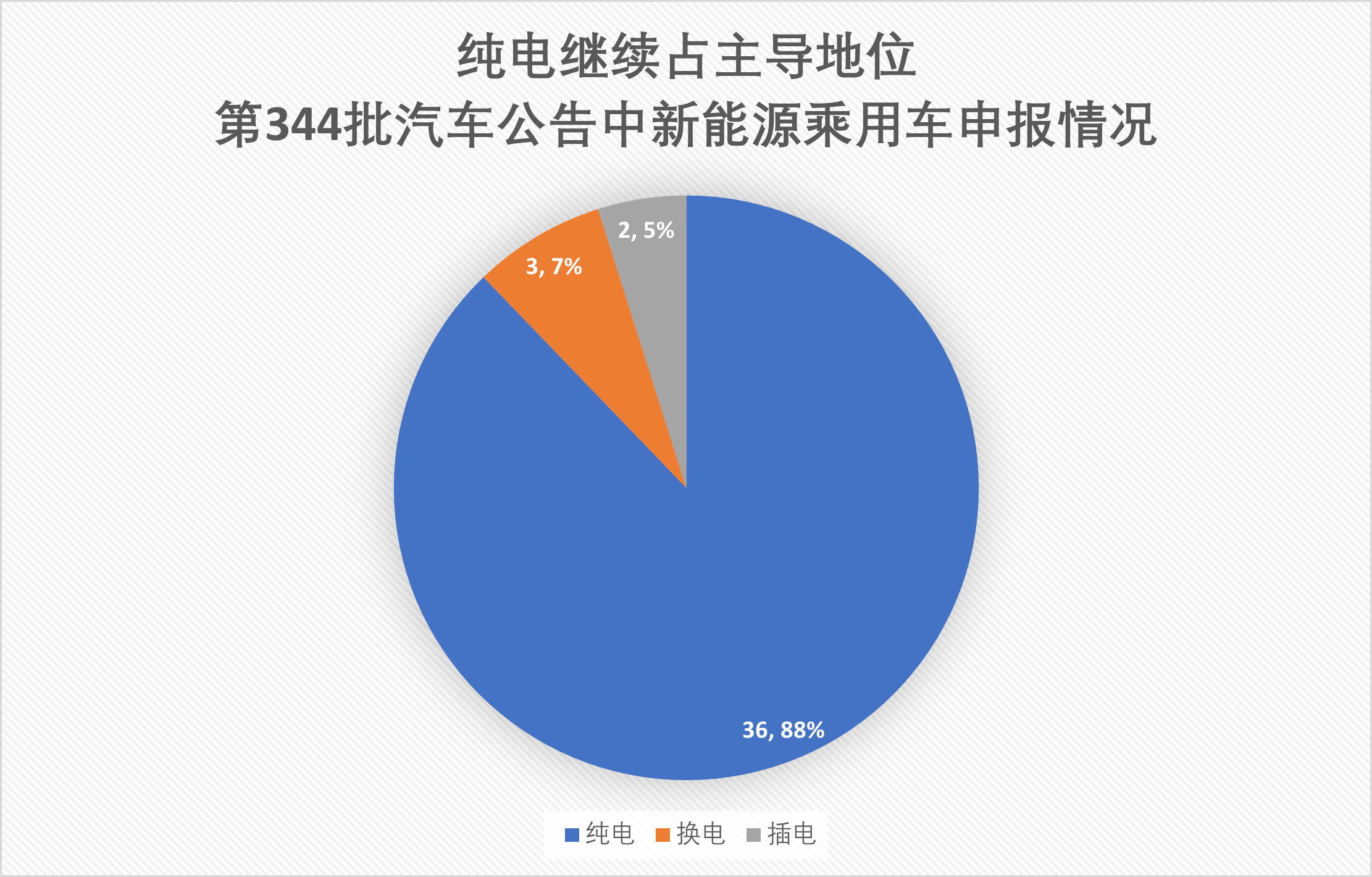
Among the 41 new energy passenger cars, pure electric vehicles dominate, with a total of 39, including 3 battery-swapping pure electric vehicles. In this batch of announcements, only Great Wall Motors reported two plug-in hybrid multi-purpose passenger vehicles.
In terms of new models, the Huawei HI version SF5 Alpha equipped with LiDAR was reported for the first time, becoming the first passenger car equipped with LiDAR in the MIIT announcement system. In addition, the Seres Huawei Smart Selection also debuted at the same time.
The first sedan of WM Motor, the E5, the pure electric SUV model EQB of Mercedes-Benz, and the first pure electric vehicle of Mazda were all unveiled for the first time in this batch of announcements.
For updated models, the Polestar 2 was reported within the Geely system and will be produced by Geely Taizhou factory, with the vehicle’s logo as “Zhejiang Houqing”.
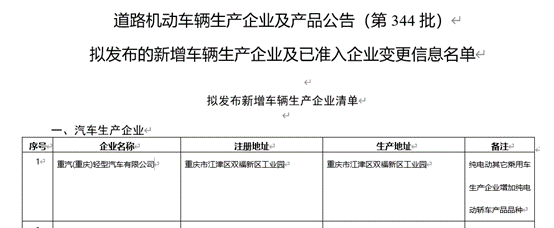
In terms of enterprises, China National Heavy Duty Truck and Weichai Power jointly established CNHTC (Chongqing) Light-duty Vehicle Co., Ltd., which entered the publicity stage and reported the new Deutz DEV model in this batch of announcements.
In terms of power batteries, among the new energy passenger car models, the number of ternary battery models far surpasses that of lithium iron phosphate, continuing to defend its position in the mid-to-high-end market.
Huawei brings LiDAR
Powered by Huawei, SF Motors debuts the first car equipped with LiDAR.
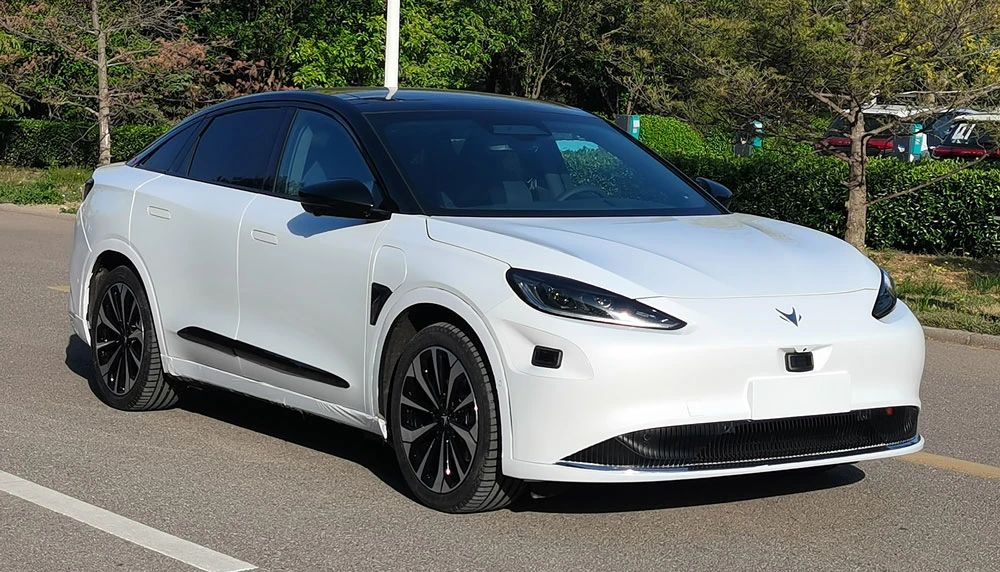
The SF5 Alpha Huawei HI version is unveiled in this batch of announcements, and it is equipped with three LiDARs located on the left, middle, and right positions of the front bumper.
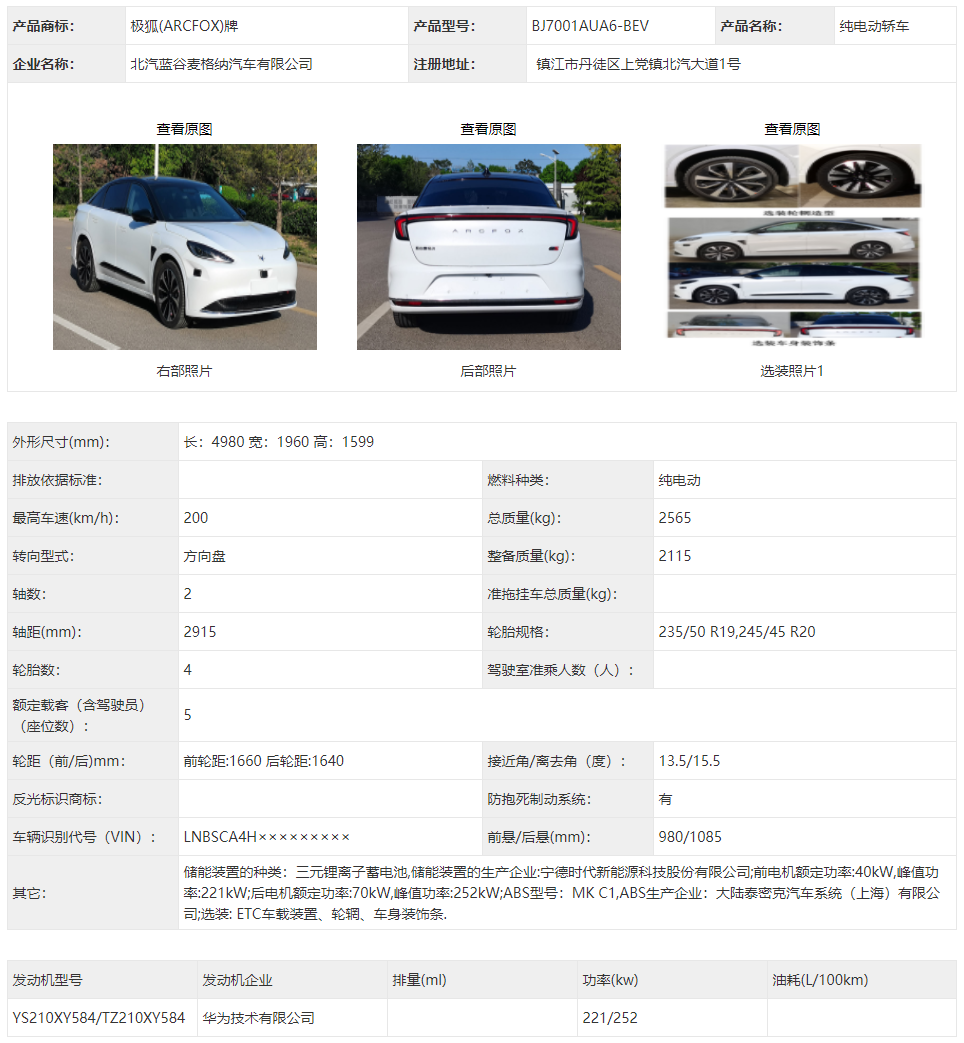
The car’s electric motor is provided by Huawei Technologies Co., Ltd. The front motor uses an asynchronous motor with a power of 221 kW, and the rear motor is a synchronous motor with a power of 252 kW. The power of the dual motors is 473 kW, which is the highest among domestic electric vehicles, including Tesla.Thanks to the powerful dual motor power system, the official announcement from the Arctic Fox Alpha S shows that the car only needs 3.5 seconds for 0-100 km/h acceleration.
In terms of batteries, the Huawei Hi version of the Arctic Fox Alpha S uses power batteries provided by CATL. As for charging speed, it takes 11.5 hours for slow AC charging to reach full charge, while fast DC charging only requires 15 minutes to charge from 30% to 80%.
Other than the three-electric system, there is no significant difference between this car and the regular version of the Arctic Fox Alpha S, with identical key information such as the length and wheelbase.
The announcement for this batch also includes models related to Huawei, such as the SF5 from Seres-Kinetic.
The Huawei Smart Selection SF5, the first car sold in Huawei’s flagship store, has added the words “Huawei Smart Selection” to the tail of the car in this batch of announcements.
In this batch of announcements, WM Motor has declared its first sedan model, suspected to be named E5.
Based on appearance, the WM sedan adopts a mainstream design, without any notable features.
In the rear, the WM sedan appears to have a signature through-type smoked black taillight design, with high recognition.
In terms of parameters, the WM sedan has a length of 4718mm and a wheelbase of 2810mm, with an axle length ratio of 59.6%. Judging from the size of the vehicle, it is positioned as an A+ level sedan, but the power system parameters are not outstanding in the same level, with a 120 kW permanent magnet synchronous motor being an entry-level standard for this class of cars.
As for batteries, the WM sedan uses ternary lithium batteries, but the manufacturer of its power battery cells has not been disclosed.
In this batch of announcements, Mercedes-Benz has declared the EQB as the second model in the EQ series.
The EQB is a pure electric vehicle based on the modified version of the Mercedes-Benz GLB gasoline car.The Mercedes-Benz EQB is a compact 7-seater pure electric SUV, with its power battery adopting trivalent lithium power battery provided by CATL.
According to public information, in July 2020, Mercedes-Benz has invested in CATL, holding about 3% of its shares, and the GLB became the first Mercedes-Benz model to use CATL batteries after the investment. Before that, the Mercedes-Benz EQC used trivalent lithium batteries provided by Contemporary Amperex Technology (CATL).
Mazda declared its first pure electric SUV, the CX-30 EV, in this batch announcement.
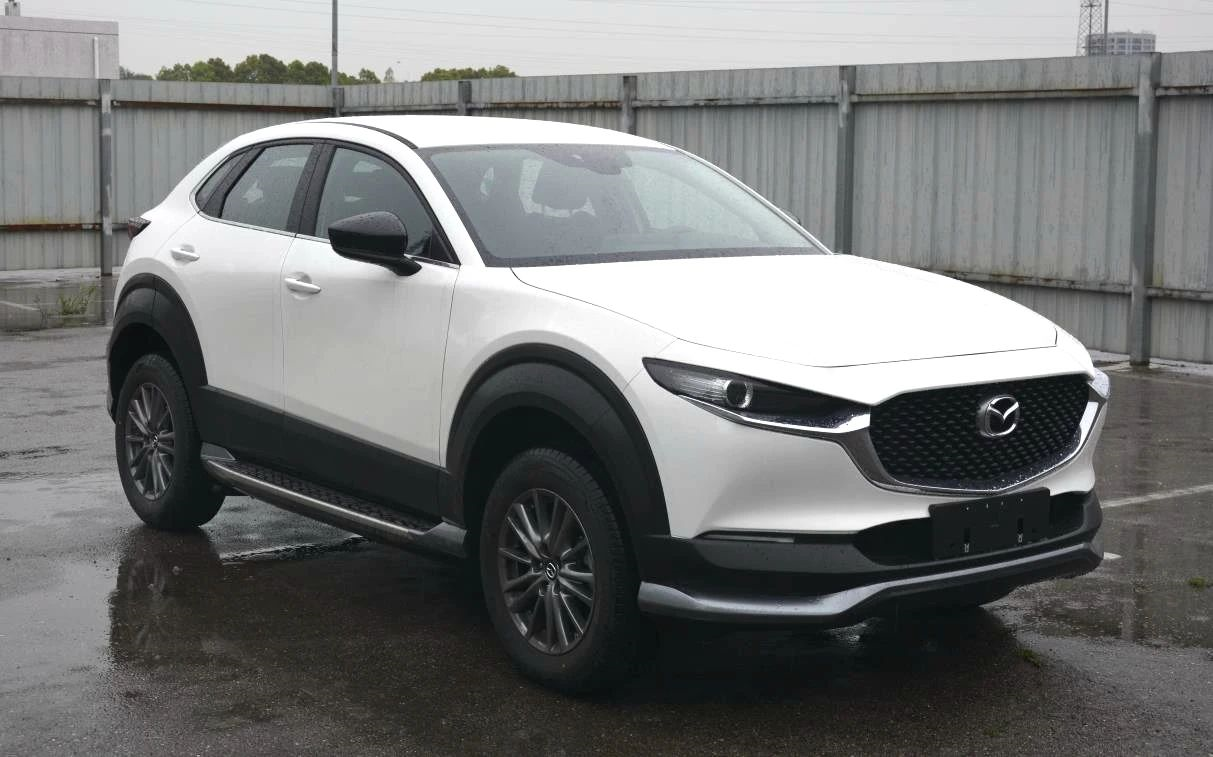
From the appearance, the bottom of the chassis hangs the battery, and the body is raised, which makes the body lines abrupt.
Great Wall Motors declared the Macher PHEV model in this batch.
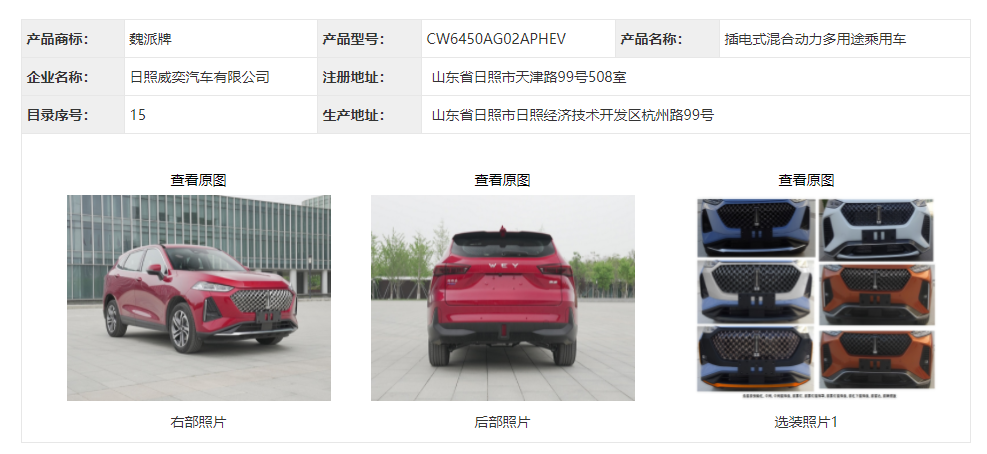
The declared Macher PHEV model is produced by Rizhao WEYEV Automobile Co., Ltd., which marks the completion of the construction of the Great Wall Motors Rizhao plant and enters the production phase. In the future, the plant will produce various plug-in hybrid and pure electric vehicles.
Increase in battery swap models
In this batch announcement, there are three battery swap models declared by FAW, Geely, and NIO.
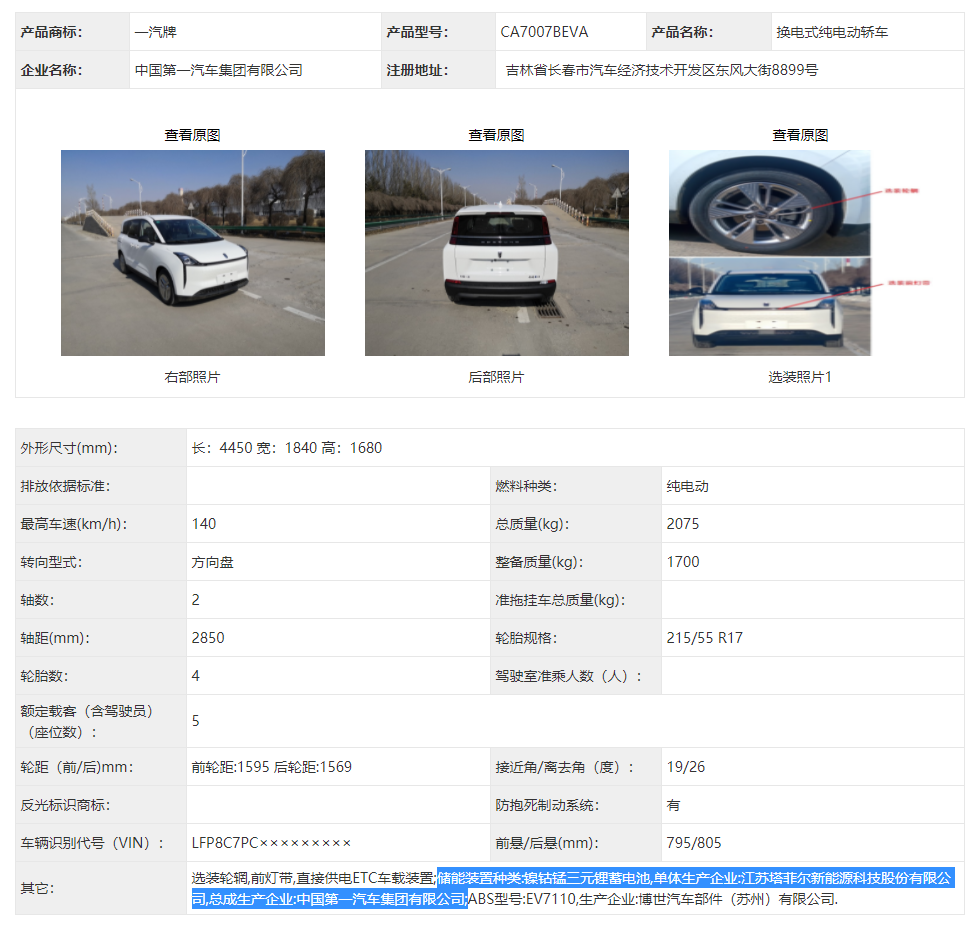
FAW declared the E05 battery swap model of Besturn, which is 4450 mm long and has a wheelbase of 2850 mm. The power battery adopts trivalent lithium battery provided by TAFEL.
The non-battery swap version of the car has appeared at the new car recommendation meeting of T3 Travel, and it is expected that the battery swap version declared this time will be used in the ride-hailing market.
Geely declared the Maple Leaf 60s battery swap model, which is 4730 mm long and has a wheelbase of 2700 mm. Judging from the optional steel rims, this car may be mainly used in the ride-hailing market.
In terms of power battery, the car adopts trivalent lithium battery provided by Guoxuan High-tech.
Although the car is declared under the Geely brand, the logo shows that it will be owned by Maple Leaf, a company under Geely specializing in battery swap pure electric vehicles. Currently, Maple Leaf has declared two battery swap models, an MPV, and an A-class sedan, both of which are modified from the EMP2 platform of the Citroen brand.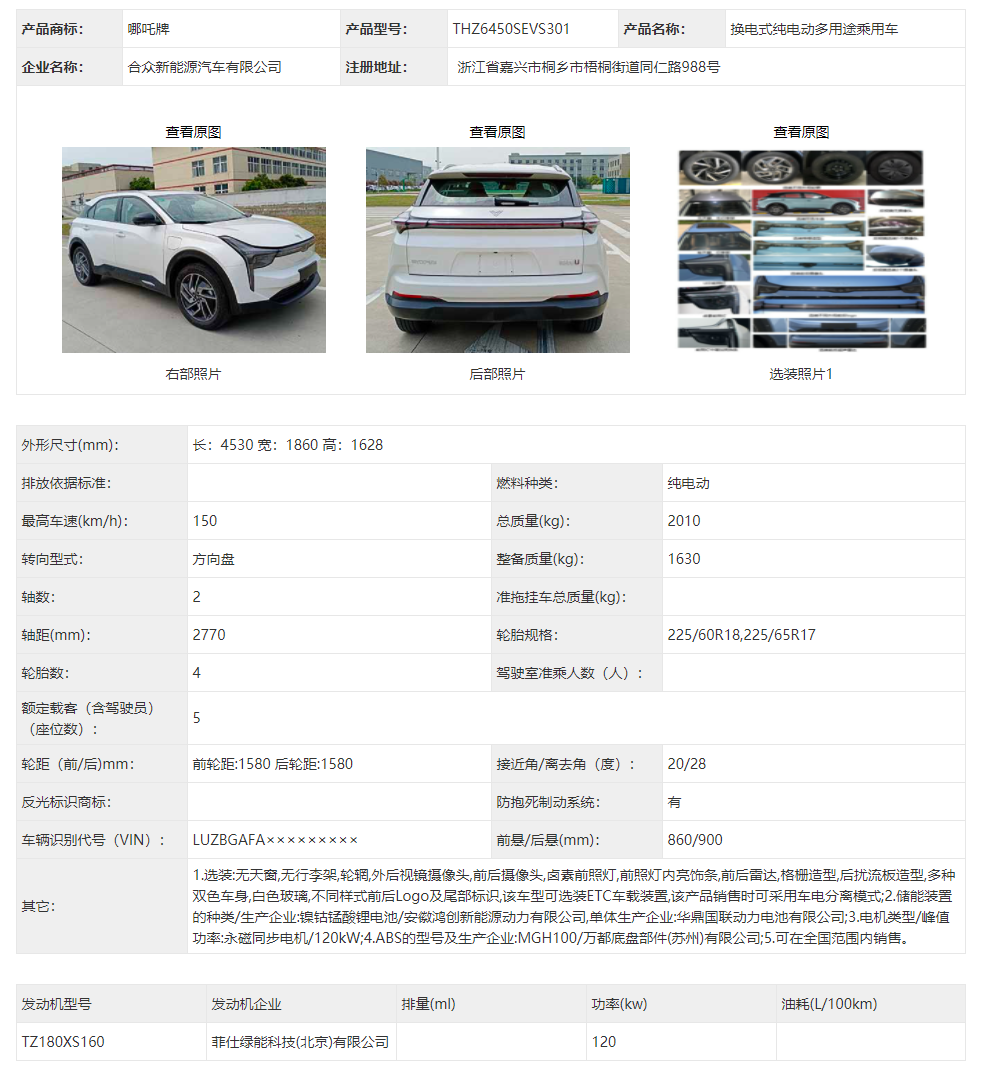
Which NIO U electric exchange car models did HE Zong declare in this batch of announcements? With a length of 4530mm and wheelbase of 2770mm, this vehicle is positioned as an A+ level pure electric SUV.
Regarding the power battery, this vehicle adopts a three-element lithium power battery cell provided by Huading Guolian and the battery pack is assembled by Anhui Hongchuang Xin Energy Power Co., Ltd., which is indirectly controlled by HE Zong.
In the same batch of announcements, it was not common for three automakers to declare three different exchange electric vehicle models. With the support of MIIT’s policies on exchange electric vehicles, it is expected that this situation will continue to further develop in the future.
As of this batch of announcements, the number of three-element lithium battery models among all declared exchange electric vehicle models is higher than that of the lithium iron phosphate battery models.
Three-element lithium wins
After being at a disadvantage in the previous announcement, the three-element lithium battery completed a comeback in this announcement.
Among the total of 41 new energy passenger cars, 29 models use three-element lithium batteries, accounting for more than 70%.
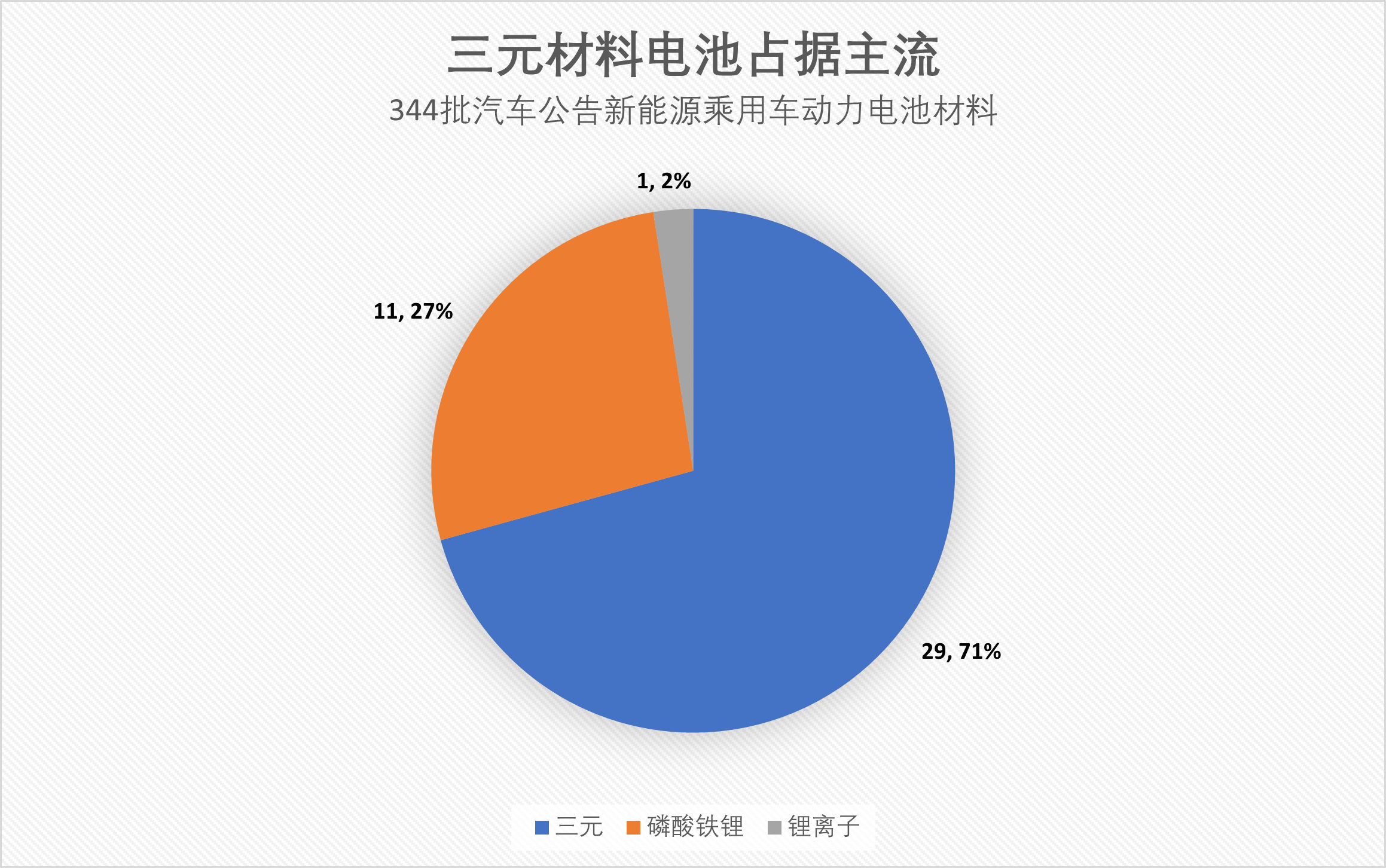
Because there were more high-end pure electric car models declared in this batch of announcements, the number of models equipped with three-element lithium batteries is relatively high.
In the previous directory, a total of 19 A00 level micro-cars were declared, while in this batch of announcements, only 9 micro-cars declared by Wuling, Leapmotor, and Yanling all use lithium iron phosphate batteries.
From the battery material situation in multiple batches of automotive announcements, it is expected that in the future, small and micro pure electric cars will generally switch to using lithium iron phosphate batteries, while mid-to-high end electric vehicles will adhere to the path of three-element lithium batteries.
This article is a translation by ChatGPT of a Chinese report from 42HOW. If you have any questions about it, please email bd@42how.com.